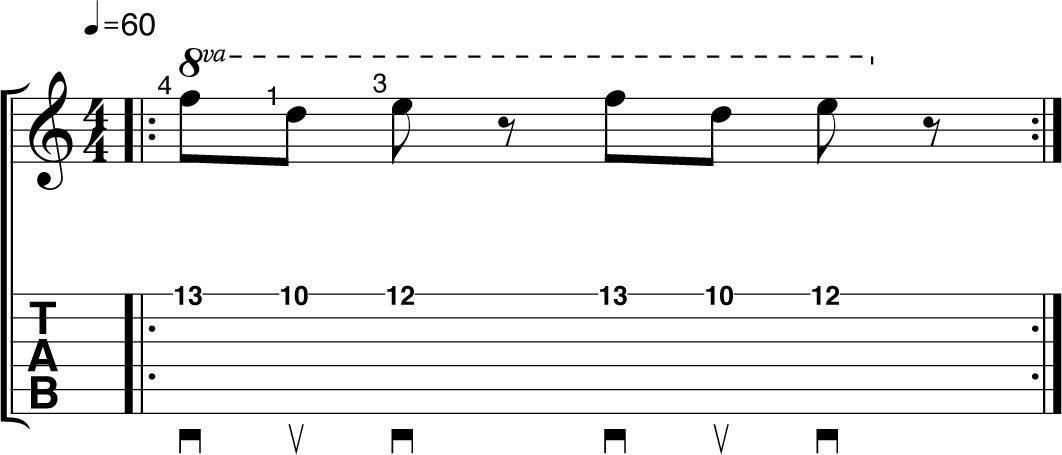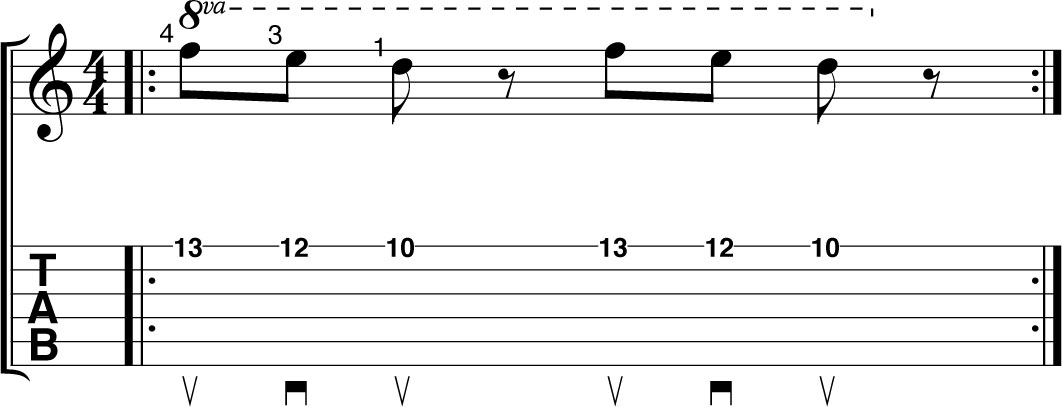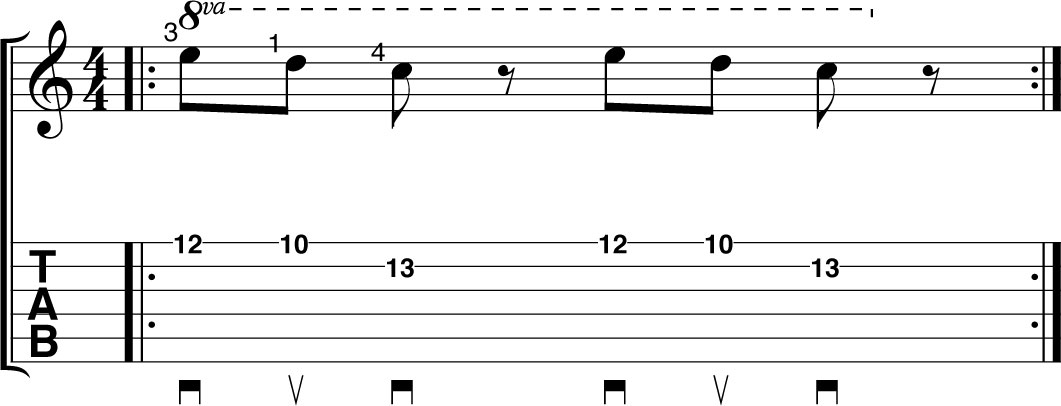30-day guitar challenge, day 24: An alternate picking masterclass
The concept's simple, but are you getting it right?

30-day guitar challenge: Alternate picking is one of the simplest guitar techniques in that it consists of simply picking down, then up, then down, then up...
One of the first picking monsters was fusion aficionado Al Di Meola, whose track Race With The Devil On A Spanish Highway is full of string-melting manoeuvres.
Since then, Paul Gilbert, John Petrucci and Rusty Cooley have taken the technique to super- human levels. The real challenge in alternate picking is changing between strings. The difficulty lies in nailing the timing with both your pick and your fretting finger.
Benchmark test

This neoclassical lick descends through the A harmonic minor scale, with the notes arranged in a six-note pattern that repeats over three octaves. Remember that you're measuring your base skill level, so make sure you're playing cleanly and without any mistakes in either hand.
Benchmark test tab (right-click to download)
Essential tips!
Hold your pick at an angle to the string so the edge hits the string. Move from your wrist in a rotational motion and try not to pick from your thumb or elbow, as these are harder to control.
Remember, your main aim is to land your fretting finger at exactly the same moment that you pick. Play each of these phrases for 30 seconds before attempting to up the tempo.
Want all the hottest music and gear news, reviews, deals, features and more, direct to your inbox? Sign up here.
Perfectly-timed down-picking

Focus on timing the down-picks with your fretting finger movements (first with your fourth finger, then your third). You should play four evenly timed downstrokes.
Up-pick on the beat

Starting on an upstroke is unusual, but it is a skill that is worth developing. Focus on timing - your pick and finger should both arrive at the string simultaneously.
String change

These three notes highlight the moment of a string change. There is likely to be a small timing difference between your pick and finger, so practise slowly.
Play it!
The alternate-picked licks that we've composed below each focus on a different pick-stroke permutation.
We start off with a two-note-per-string pattern, in which each string change is performed with a downstroke - the rock lick changes string on an upstroke. We complete this set of musical licks with the final shred example, which alternates between downstroke and upstroke string changes.
Blues lick

This lick uses the notes of the A minor pentatonic scale (A C D E G) and is arranged in four-notes-per-scale shapes, moving down the neck after each group of four.
For maximum speed, play the entire lick with your first and third fingers, and sync your third finger with each downstroke in order to lock both hands together.
Blues lick tab (right-click to download)
Rock lick

You need steady timing for this 16th-note lick. In bar 1, change from the first string to the second with a downstroke followed by an upstroke in an 'inside the strings motion.
In bar 2, change from the second string to the first with a downstroke followed by an upstroke in an 'outside the strings' motion.
Rock lick tab (right-click to download)
Shred lick

Starting on a B note, this lick uses a six-note phrase based on the A harmonic minor scale (A B C D E F G#).
In bar 1 this follows a two-string fretting pattern, ie, the six-note shape is repeated on the other string pairs. Target your first finger on the first note of each six-note grouping and keep your pick moving down and up.
Shred lick tab (right-click to download)
Total Guitar is Europe's best-selling guitar magazine.
Every month we feature interviews with the biggest names and hottest new acts in guitar land, plus Guest Lessons from the stars.
Finally, our Rocked & Rated section is the place to go for reviews, round-ups and help setting up your guitars and gear.
Subscribe: http://bit.ly/totalguitar
